
We wish IM Philip J Morris all the best on his birthday, this day (November 5th) in 1967.
Phil plays regularly for Beckenham & Charlton Chess Club in the London Chess League and has played for Invicta Knights Maidstone in the Four Nations League.

We wish IM Philip J Morris all the best on his birthday, this day (November 5th) in 1967.
Phil plays regularly for Beckenham & Charlton Chess Club in the London Chess League and has played for Invicta Knights Maidstone in the Four Nations League.
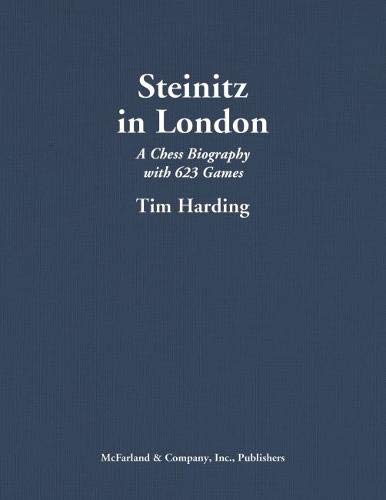
Steinitz in London : A Chess Biography with 623 Games : Tim Harding
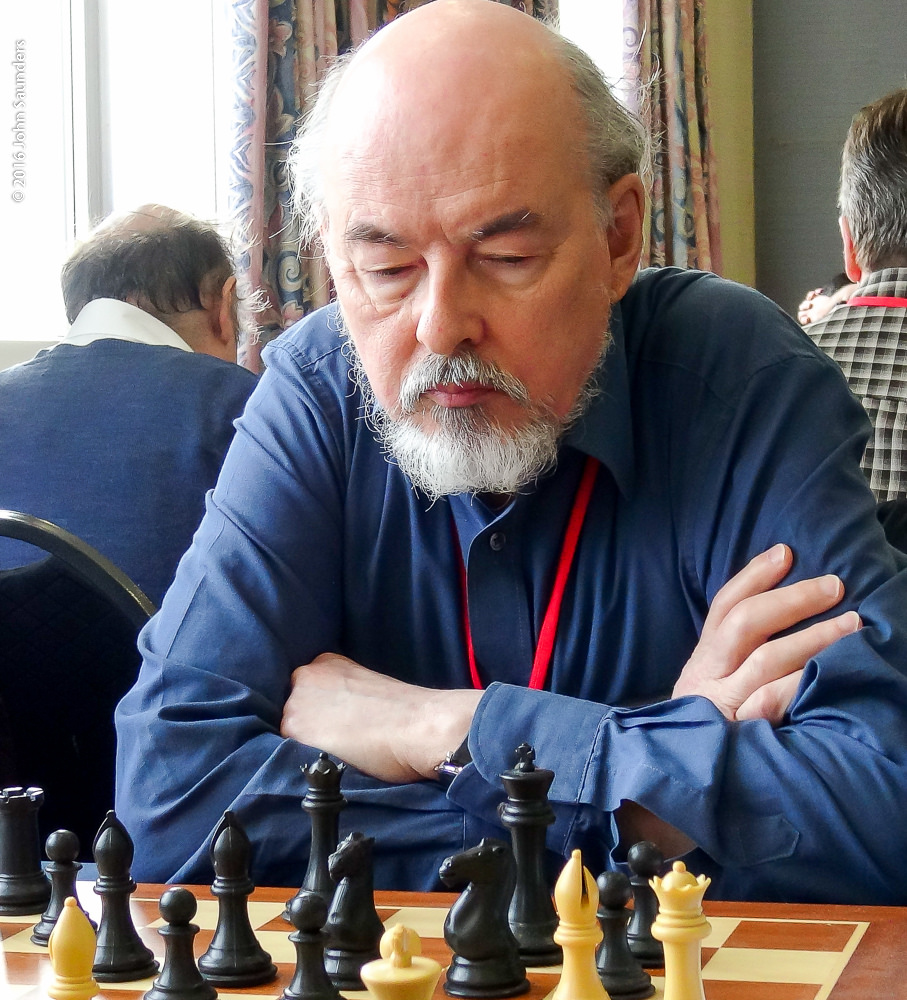
“Tim Harding played for Ireland at the 1984 FIDE chess Olympiad in Thessaloniki. He is a FIDE Candidate Master and a Senior International Master of correspondence chess. A well-known writer on many aspects of chess, Tim is a former editor of Chess Mail magazine and for almost 20 years he contributed monthly articles in “The Kibitzer” series. He lives in Dublin, Ireland.”
From the publisher’s blurb :
“Drawing on new research, this first biography of William Steinitz (1836-1900), the first World Chess Champion, covers his early life and career, with a fully-sourced collection of his known games until he left London in 1882. A portrait of mid-Victorian British chess is provided, including a history of the famous Simpson’s Divan. Born to a poor Jewish family in Prague, Steinitz studied in Vienna, where his career really began, before moving to London in 1862, bent on conquering the chess world. During the next 20 years, he became its strongest and most innovative player, as well as an influential writer on the game. A foreigner with a quarrelsome nature, he suffered mockery and discrimination from British amateur players and journalists, which eventual drove him to immigrate to America. The final chapters cover his subsequent visits to England and the last three tournaments he played there.”
Collectors of McFarland’s chess biographies will know exactly what to expect.
A handsome, beautifully produced hardback book based on extensive and exhaustive research, in this case concerning William Steinitz (Harding prefers to use the anglicized spelling of his name), the first official world champion.
He was born under the name Wolf Steinitz into a Jewish family in Prague in 1836, making him a year older than Morphy. He moved to Vienna to study mathematics in 1858, and it was there that he started playing chess seriously. In 1862 he travelled to London to play in an international tournament, and remained there, living the life of a chess professional, for 20 years.
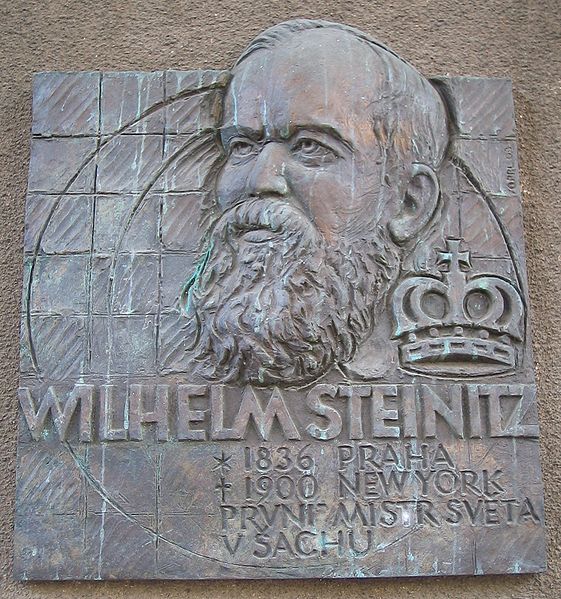
Here’s Harding, in the Preface:
“This is not just a game collection but also an important biographical work. Subsequent to his triumphant comeback at the Vienna international tournament and his resignation as chess editor of The Field, Steinitz left England for a long tour of America. In the spring of 1883 he returned to play in the London 1883 tournament, after which he spent some more time in London; Chapter 12 deals with this. Steinitz then left England permanently and did not set foot in the country for another 12 years. The final chapter deals with his last visits to Britain which included two major tournaments, Hastings 1895 and London 1899. There is much less biography than chess in those two chapters but some information about his European tours is included. The tasks of writing a new biography of the final phase of Steinitz’s life after he left England, and of providing an authoritative game collection of his post-London period, are left for future scholars.
“The primary motivation for embarking on the research for this book was to present a chronological account of Steinitz’s two decades as an English resident, covering both the development of his chess career and significant life events. The chapter about Steinitz in this author’s earlier work, Eminent Victorian Chess Players, may be seen as a first essay in that direction but the present book goes much deeper, including appendices that document various controversies in which Steinitz became embroiled. The book also includes background sections about chess life in London going back to the earlier nineteenth century, dealing with London’s early chess clubs and public places where the game was played, before and during Steinitz’s time.”
Harding chose to include all available games from Steinitz’s time in London, some of which have only recently been rediscovered in old newspaper and magazine columns, so you have in total 623 games, mostly with some annotations from contemporary sources, occasionally, where appropriate, with interjections from Stockfish 10. In those days, of course, there were few tournaments, so he made a living, apart from journalism and teaching (one of his pupils was Lord Randolph Churchill, Winston’s dad), by giving simultaneous displays and playing against amateurs, who would pay for the privilege. If the games were particularly interesting or brilliant, they would find their way into print. In the early part of his career, Steinitz was renowned for his tactical acumen, so the book is crammed full of romantic King’s Gambits and Evans Gambits. Lovers of this style of chess won’t be disappointed.
In his preface, Harding draws the reader’s attention to two games in particular:
All the games have been checked using every primary source with discrepancies noted. So if you want a full and accurate record of every currently available Steinitz game from his time in London, along with some earlier games from his time in Vienna and those from his later English tournaments, look no further.
But what you also get is a lot of background information about chess in London during that period. The clubs, the events, the personalities, the disputes: everything is there. One of my personal interests is the changing position of chess within society over the past 200 years, and the changing demographics of the people who were attracted to the game over the years. In Steinitz’s time, as you would expect, chess clubs were entirely male and largely upper middle class. Most readers will be aware that chess was a particularly popular pastime amongst Church of England clergymen well into the 20th century. Helpfully, at least to me, Harding will often provide the full name and a one sentence biography of Steinitz’s amateur opponents. Although he is very thorough when researching Steinitz and his games, he tends only to consult one source for his opponents.
I decided to follow up a few random names through a quick search of genealogical websites: I found one or two mistakes and was also to provide probable identification in several cases where only the initial and surname were given. I also came across some fascinating stories which I’ll relate another time.
But this is just me: none of this will matter to most readers, who will be more interested in Steinitz than his opponents. It’s unrealistic to expect Harding to research these minor figures with the same diligence afforded to his protagonist.
Make no mistake about it: this is a major addition to the literature of our game, marked by scholarly research and historical accuracy, and, as such, deserves a place in the library of anyone with an interest in chess history. McFarland and their authors are doing an enormous service to the chess community by publishing books of this nature: this volume will sit alongside several other Harding works, notably his biography of Blackburne, Renette’s biography of Bird and Forster’s biography of Burn on your shelf devoted to 19th century British chess history.
But it’s not just a dry as dust history book. It’s a gripping read as well. Harding tells his story with panache, leaving the reader eager to turn the page and find out what happened next, helped, in part, by his subject’s disputatious nature. Whatever you do, don’t miss out on the appendices, in particular where Steinitz describes how he was allegedly assaulted by Blackburne on two occasions: “… he pounced upon me and hammered at my face and eyes with fullest force about a dozen blows, until the bedcloth and my nightshirt were covered with blood.”.
It is to be hoped that a future volume will appear, perhaps written by an American chess historian, covering the latter stages of Steinitz’s career. A Best Games collection, looking at his play through both 19th and 21st century eyes, would also be a valuable edition to chess literature.
A large book with high production values and a niche market is never going to come cheap, but, even if you’ve never read anything of this nature before, you might want to give it a try. With chess clubs closed and pubs offering restricted services, what better way could there be to spend your winter evenings?
Very highly recommended: 2020 has been an excellent year for chess books and this is certainly one of the best.
Richard James, Twickenham 21st October 2020

Book Details :
Format: library binding (8.5 x 11)
Pages: 421
Bibliographic Info: 84 photos, 623 games, appendices, notes, bibliography, indexes
Copyright Date: 2020
pISBN: 978-1-4766-6953-3
eISBN: 978-1-4766-4061-7
Official web site of McFarland

Timman’s Triumphs : My 100 Best Games : Jan Timman
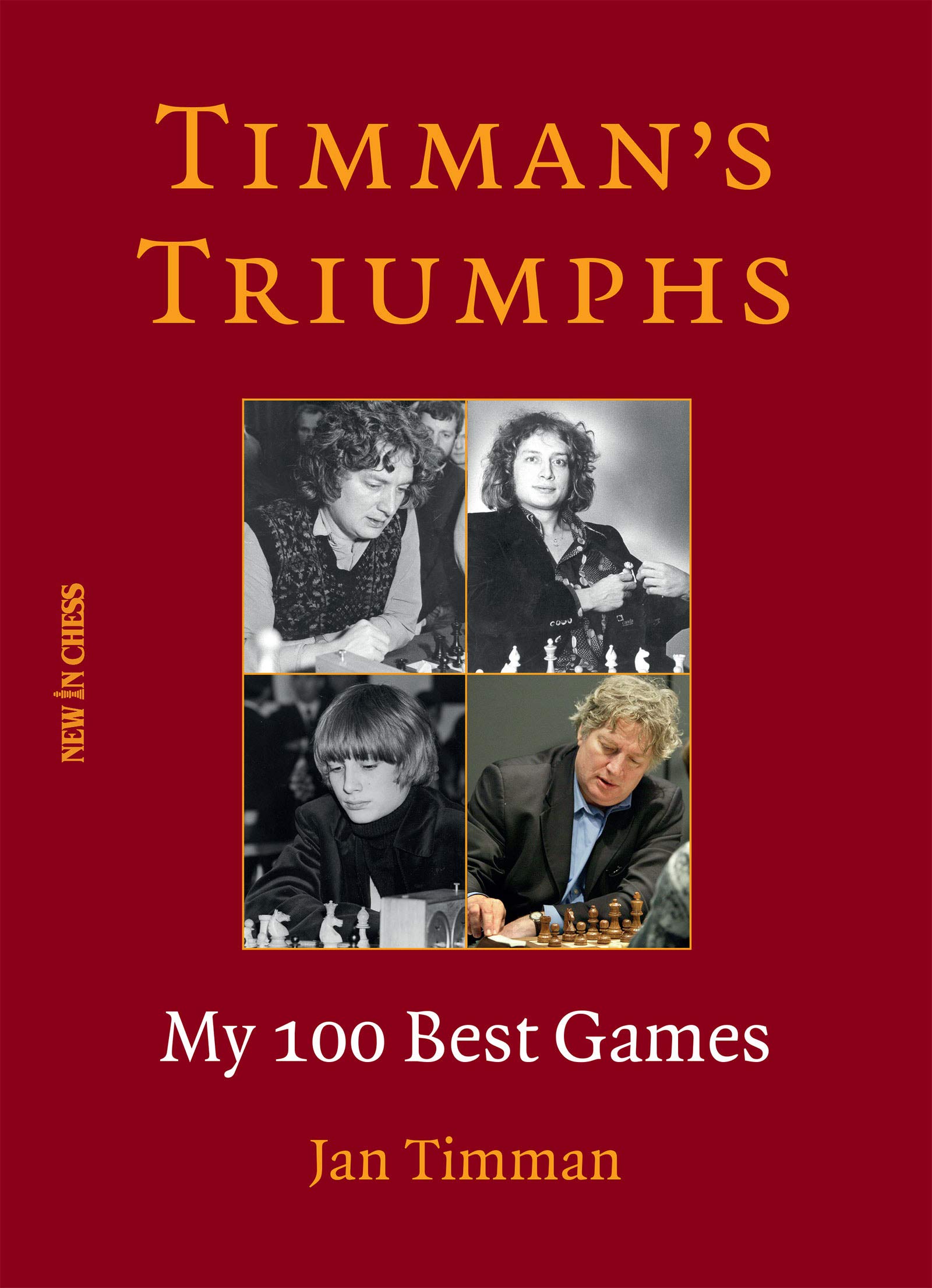
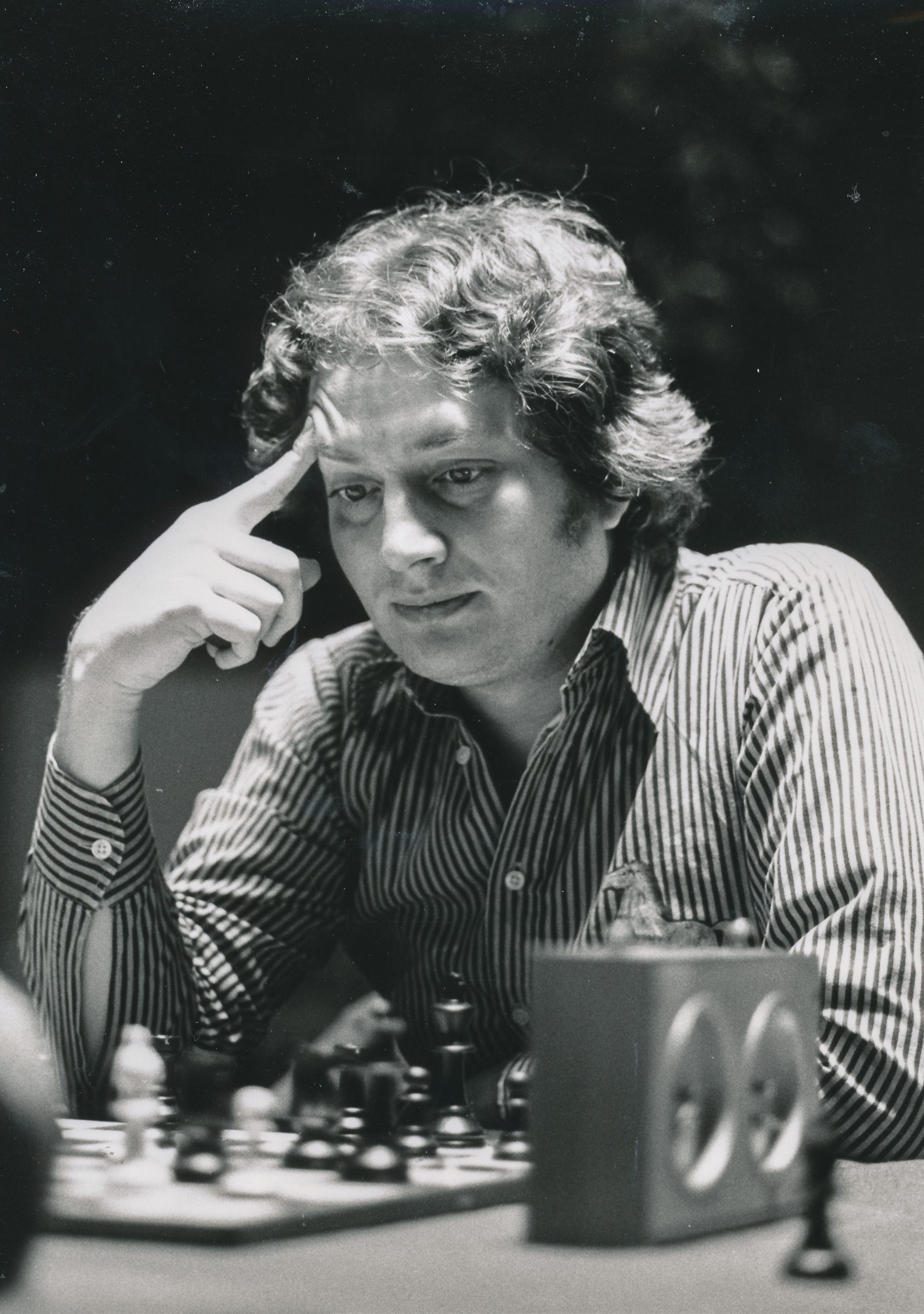
From the publisher :
“Jan Timman is the author of highly acclaimed books such as Curacao 1962 and The Art of the Endgame. His best-selling Timman’s Titans won the 2017 English Chess Federation Book of the Year Award. His previous book, The Longest Game, is a riveting account of the epic rivalry between Garry Kasparov and Anatoly Karpov.”
From the book’s rear cover :
“Jan Timman is one of the greatest chess players never to win the world title. For many years ‘the Best of the West’ belonged to the chess elite, collecting some splendid super tournament victories. Three times Timman was a Candidate for the World Championship and his peak in the world rankings was second place, in 1982. For this definitive collection, Timman has revisited his career and subjected his finest efforts to fresh analysis supported by modern technology. The result is startling and fascinating. From the games that he chose for his Timman’s Selected Games (1994, also published as Chess the Adventurous Way), only 10(!) made the cut. Some games that he had been proud of turned out to be flawed, others that he remembered as messy were actually well played. Timman’s Triumphs includes wins against greats such as Karpov, Kasparov, Kortchnoi, Smyslov, Tal, Spassky, Bronstein, Larsen and Topalov. The annotations are in the author’s trademark lucid style, that happy mix of colourful background information and sharp, crystal-clear explanations. Once again Jan Timman shows that he is not only one of the best players the game has seen, but also as one of the best analysts and writers.”
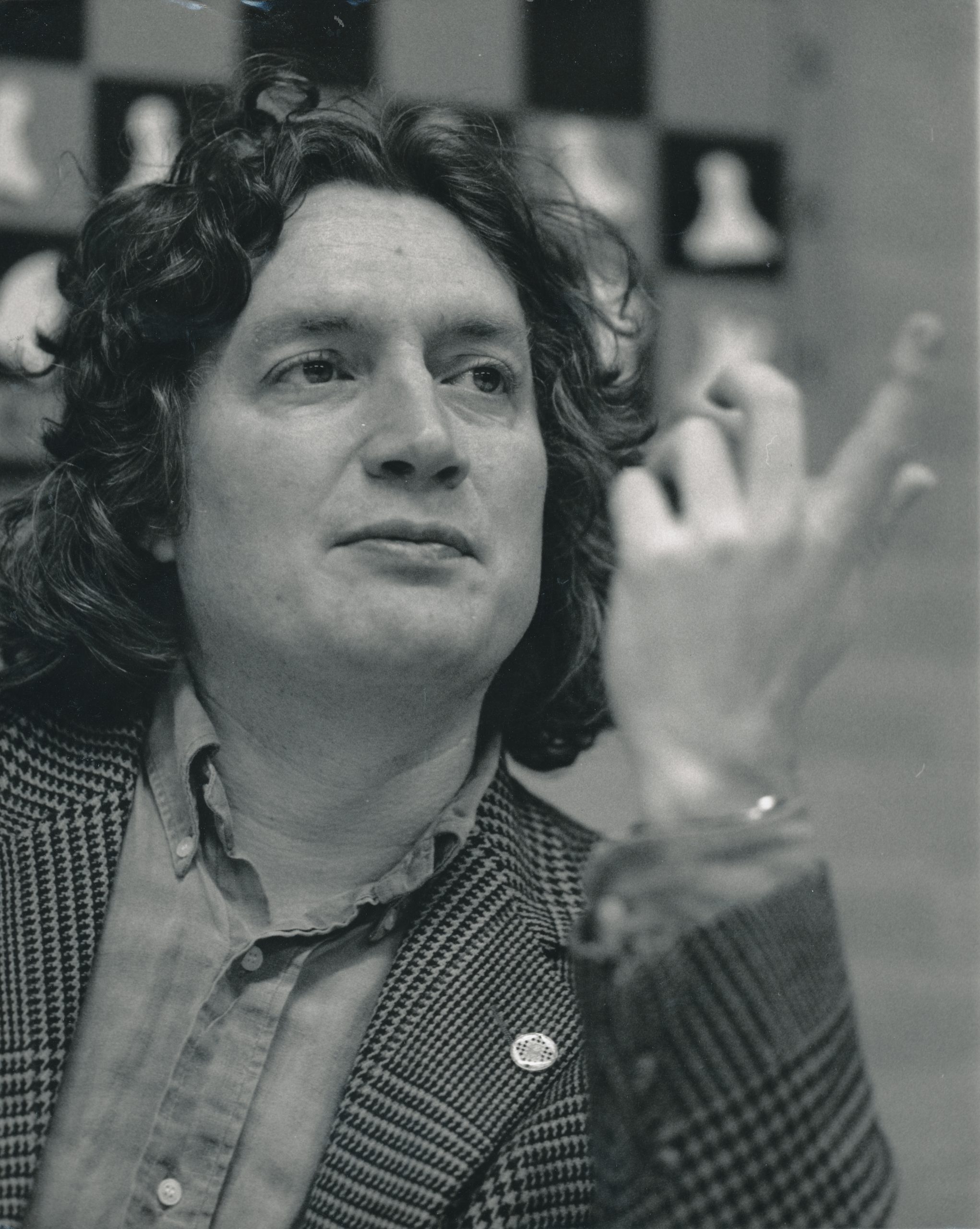
Jan Timman (b 1951) has had an active chess career lasting over half a century. For much of the 1980s he was considered the strongest player in the West, with only Karpov and Kasparov clearly his superior. He also has an enviable reputation as an excellent writer and annotator, as well as an expert on endgame studies.
Here, we have a collection of Timman’s 100 best games. In fact, that’s not quite true. The introduction includes two games which just missed the cut, plus another three extracts where he played a study-like move.
As this is a best games collection, you won’t find any losses. There are two draws, from either end of his career, and 98 wins. As you’ll see from the back cover, there’s very little overlap with Timman’s earlier best games collection, and those games now have totally different annotations.
The analysis has all been double checked using strong engines, so you can be pretty sure of its accuracy. At the same time, Timman’s annotations are resolutely old school, and, for this reviewer at least, none the worse for that. You don’t get reams of computer generated tactics, just lucid explanations, with variations only when necessary.
Take, for example, one of his quicker wins, a victory with the black pieces over Nigel Short from Linares 1992. Here’s how Timman annotates the conclusion.
But, as an endgame connoisseur, he occasionally goes into more detail when a fascinating ending appears on the board.
This position is from a game, again with Black, against Artur Yusupov (the book uses the German spelling Jussupow) played in Belgrade in 1989. This position arose just after the adjournment at the second time control. Here’s how Timman explains this position.
“The analysis during the break had taught me that a transfer to a rook ending was the most convincing path to the win. Jussupow had mainly looked at 63… b2. During the post-mortem, he told me that he had found drawing chances in that line. However, the computer is unrelenting. Black wins also here with two accurate king moves: 64. Rb1 Rd2 65. f5 Kd6! 66. Nf7+ Ke7!, and White cannot take on g6, since Black has the d3-square for his bishop.
“During the analysis, I also looked at the spectacular 63… Rd3+ 64. Kg4 Rd1. If this had worked, it would have been a study-like conclusion to the game. Alas, it doesn’t work. The main line continues as follows: 65. Rxd1 Be2+ 66. Kxh4 Bxd1 67. f5 Be2 68. f6 Kd6
and now White has the incredible finesse 69. Nc6!!. Luckily, I found this study-like save in my hotel room in Belgrade. After 69… Bc4 70. Na5! Bf7 71. Nxb3, a theoretically drawn endgame ensues.”
(The game concluded 63… Bd3 64. Nxd3+ Rxd3+ 65. Kg4 Rd4! 66. Rb1 Kb4 67. Rf1 b2 68. Kxh4 Rc4 69. Rb1 Kb3 70. Kg3 Rc3+ 71. Kg2 Kc2 and White resigned.)
These two examples will give you some idea of Timman’s annotation style.
Timman has always been a universal player who uses a wide range of openings so there’s a lot of variety in the play: no chance of getting bored by seeing the same type of position over and over again. Each game is put into its context regarding the tournament or match in which it took place. The text is also enlivened by many entertaining anecdotes, often concerning Timman’s rather hedonistic (especially in his early years) lifestyle. We read, for instance, about listening to Frank Zappa with Ray Keene, and taking the young Nigel Short to a nightclub on the eve of an important game.
There are many readers and who particularly enjoy best games collections: they will certainly revel in this excellent book. For those of you of Timman’s (and my) generation the book will also bring back many memories. For younger readers, though, much of it will be ancient history: perhaps they’ll get the same pleasure out of it that I got from studying the games of Alekhine and Capablanca many years ago.
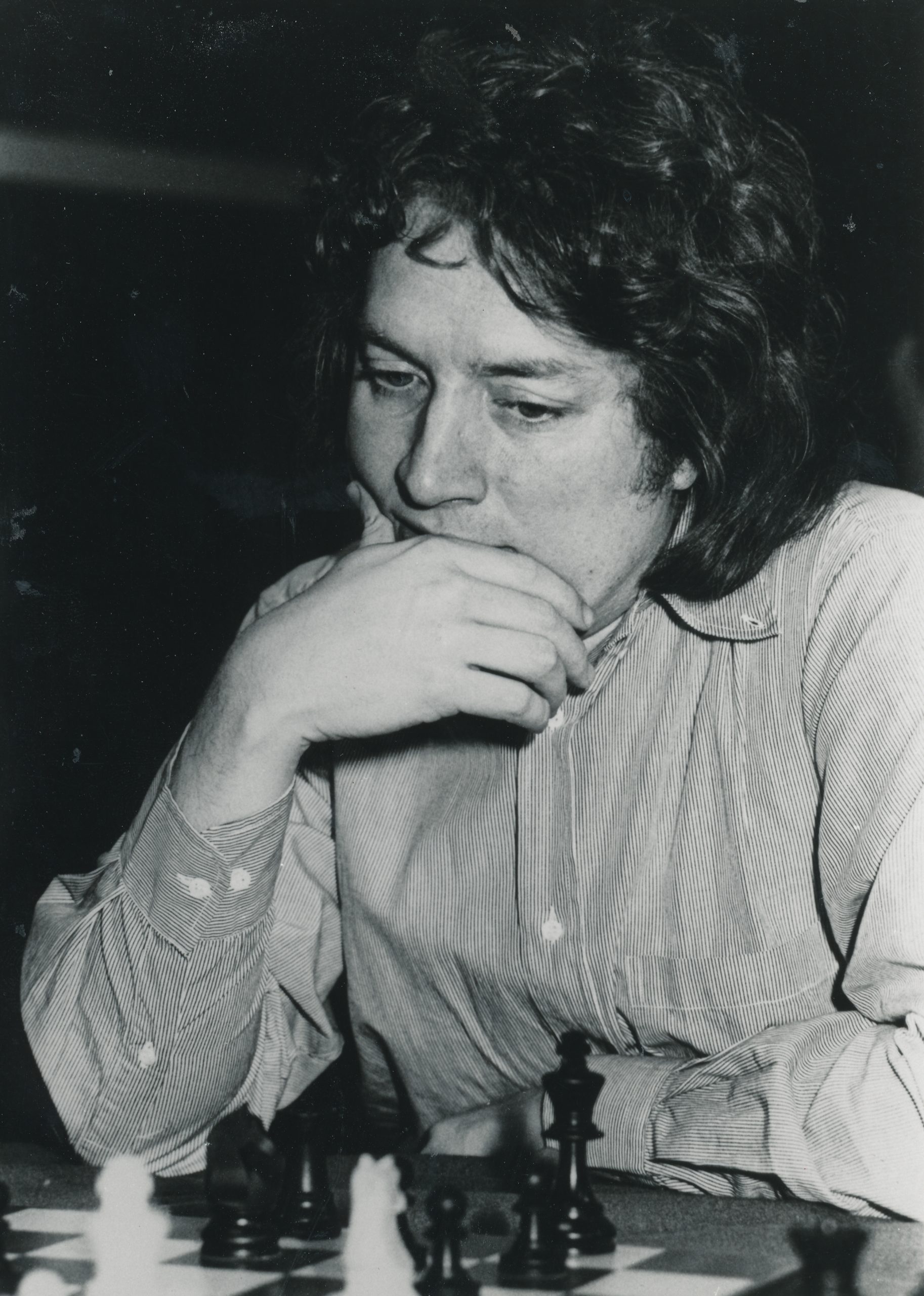
You might prefer a more spacious layout for the games. You might have liked a summary of his tournament and match results. You might have liked some tournament cross tables. But of course publishers have to make hard commercial decisions. At least we get an index of players (all players mentioned in the book for any reason, rather than an index of opponents) and an index of openings.
But, most importantly, you get 100 great games from one of the best players of the past 50 years, with lucid and instructive annotations. I’m pleased to give this book a warm recommendation.
One last thought. Timman tells us that someday he might write a book of his most exciting games, which would include more draws and several losses. Yes, please!
Richard James, Twickenham 17th October 2020

Book Details :
Official web site of New in Chess

The Match of the Century USSR vs. World : 50th Anniversary Edition
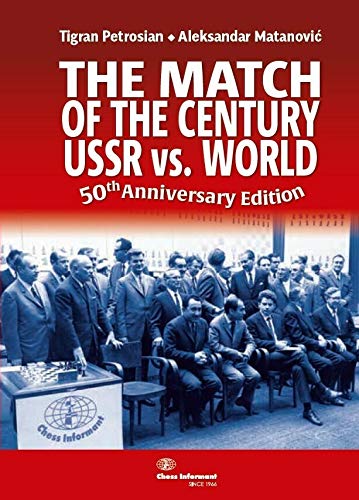
“The match between the USSR and the Rest of the World was an epoch-defining event that featured many of the greatest names in the history of chess. Five World Champions, and all of the world’s highest-rated players – without exception – took part. Not for nothing was it billed as the “Match of the Century”.
On the 50th anniversary of that great event in the Serbian capital, we invite the reader to take a step back to those years and to re-live the match as it was experienced at the time, in the words of its participants and some of the leading journalists of the day…
This edition is revised, extended, and compiled by Douglas Griffin, chess historian and connoisseur and Igor Žveglić, Chess Informant commissioning editor.”
Chess history and book enthusiasts will doubtless know that the first edition of this book (SSSR – SVET Soviet Union vs. World) was written by Tigran Petrosian and Alexander Matanovic and published in 1970 by Chess Informant :
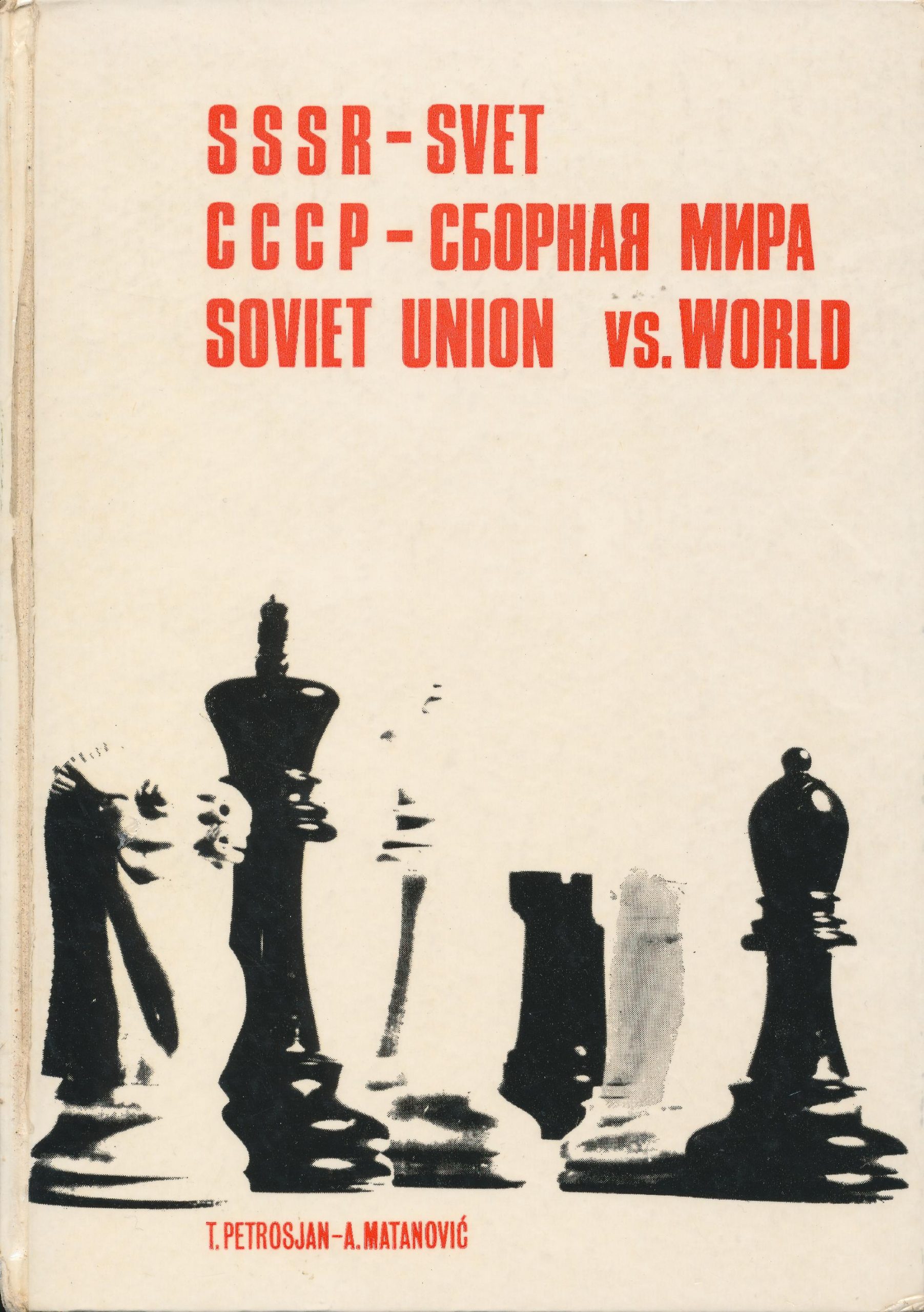
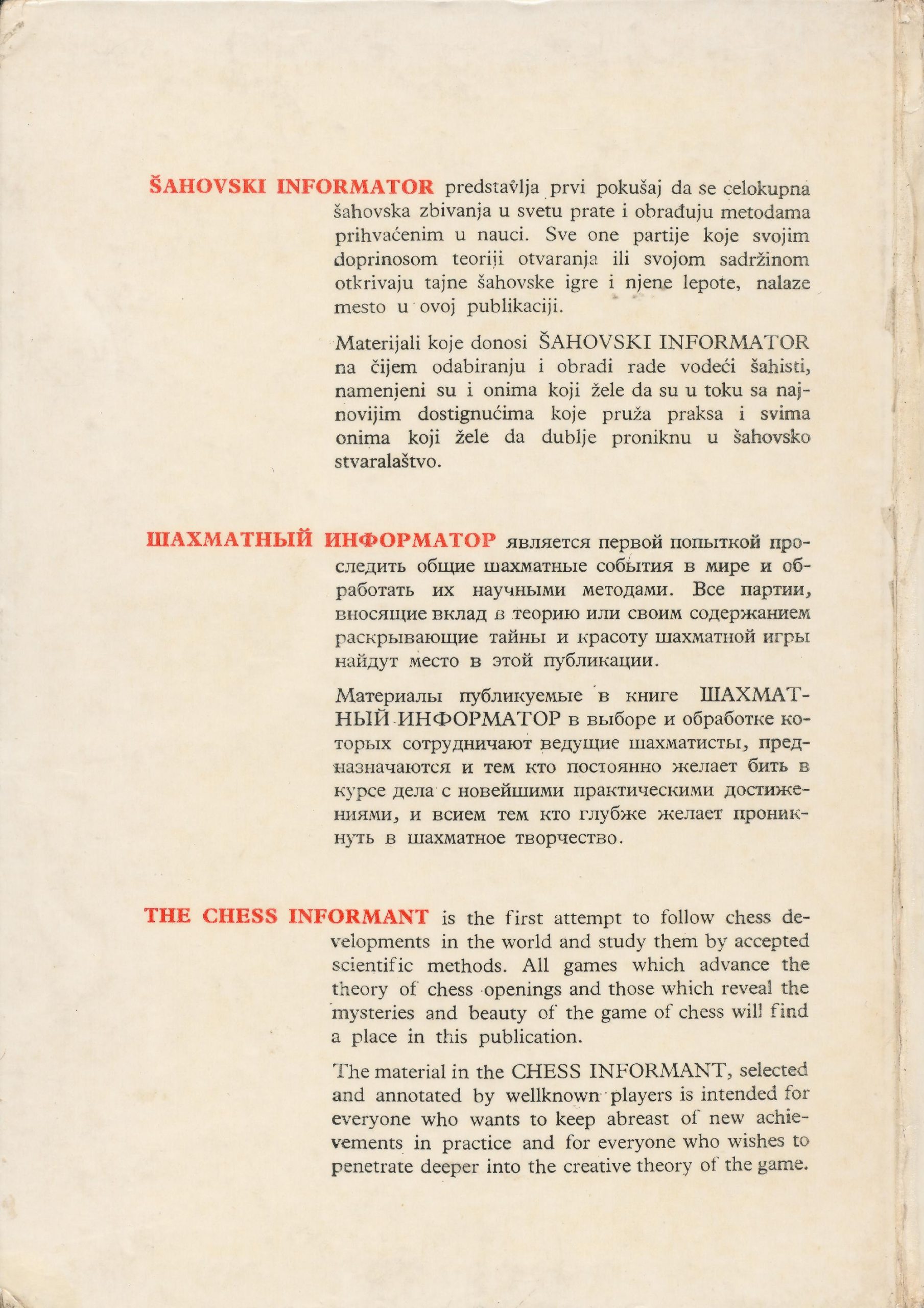
and commands reasonably high prices on the second hand book market.
Possibly more famous is the version written by Serbian FM, Dimitrije Bjelica (Димитрије Бјелица) together? with Bobby Fischer.
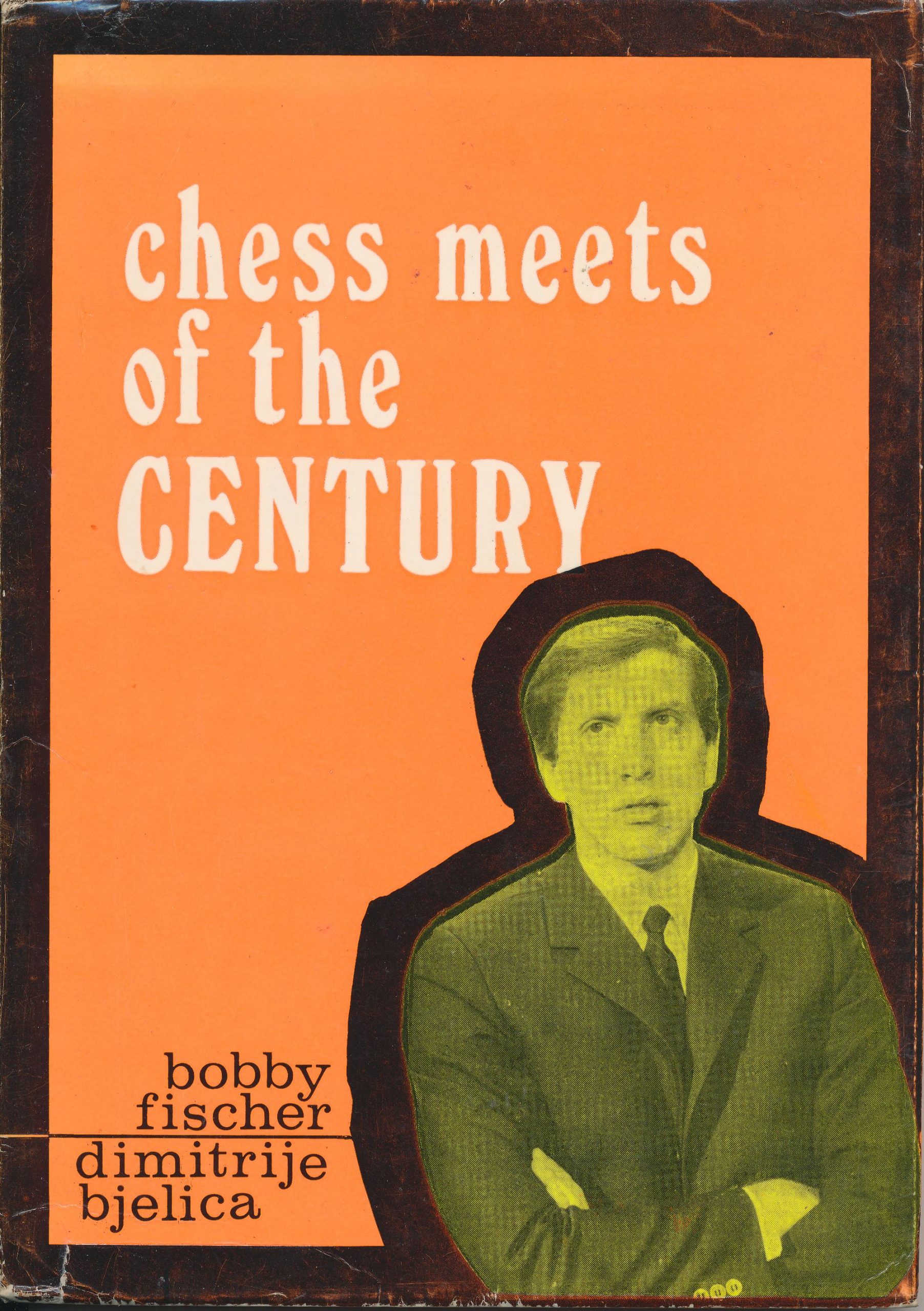
commanding even higher prices. Did Bobby contribute anything to this book? Another discussion for another time and another place perhaps…
The 50th Anniversary Edition is a rare thing in modern chess publishing : it is a hardback and a well-produced one. Chess Informant (along with McFarland Books and some Quality Chess titles) is known for publishing in hard back and, of course, the cover price reflects that. The book has a rather charming silk-style bookmark which is another endearing touch.
Internationally renowned chess historian Douglas Griffin and Igor ŽvegliĆ (both members of the Editorial Board) have taken the original Petrosian and Matanovic text, refreshed it and added new content not available at the time of the 1st editions publication. They have expanded the previously brief player biographies and the original Russian-language annotations have been translated.
Also, we have translations of contemporary articles from the Soviet chess press and subsequent recollections from some of the players and officials involved in the 1970 match.
Here is an article about the book from Douglas Griffin.
Initial impressions were somewhat soured by reading the Foreword to the 1st Edition : it contained typographical errors (not in the 1st edition : I checked) such as “developmet”, “chapions”. Hopefully these were not a portent of things to come!*
*It turns out my concerns were unfounded.
I conducted a careful comparison of the 1st and 2nd editions and drew several conclusions in favour of the 2nd edition. The paper and print quality is far superior, there are many more photographs and those photographs all have detailed attributions.
The player biographies are vastly more detailed and improved (and in English!). The annotations of the games appear to be the same except that all of the text is in English rather than just the comments of the World team player. Of course, the player annotations are delightful and deep and free of engine analysis : hurrah!
Here is one of the top board games annotated for ChessBase (rather than Informator) :
It is pleasing that the book was not spoilt by modern engine analysis and the players thoughts are a pleasure to study. There are additional diagrams for the 2nd edition annotations reducing the need for a board to follow the game : a board is a good idea anyway of course!. Each of the games are classified by ECO code (for example [E30]) whereas you might imagine the 1st edition would use a Rabar Index but it did not. Most people will know that Informant abandoned the use of the Rabar Index in 1981 in favour of ECO codes.
Following the annotated games we have a new section – “Reactions to the Match” Any chess enthusiast will find this fascinating and this section is followed by a Postscript which discusses the match in the context of the modern game. Enthralling stuff!
As a bonus feature there is an extensive list of References at the rear. Since Douglas Griffin was the main writer of this 50th Anniversary Edition you would his expect superb attention to detail and historical accuracy and that is what you are given.
In summary, this is a delightful book both from the visual perspective and from its content. You will not be disappointed – even the other books on your shelf will be pleased by this new edition.
If you would like to get an idea of the book before purchasing (and please do!) then try these sample pages. Personally, I’d rather read the words from the book than a screen.
John Upham, Cove, Hampshire, 15th October, 2020

Book Details :
Official web site of Sahovski Chess
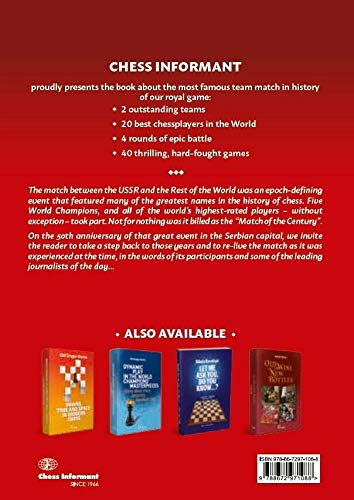
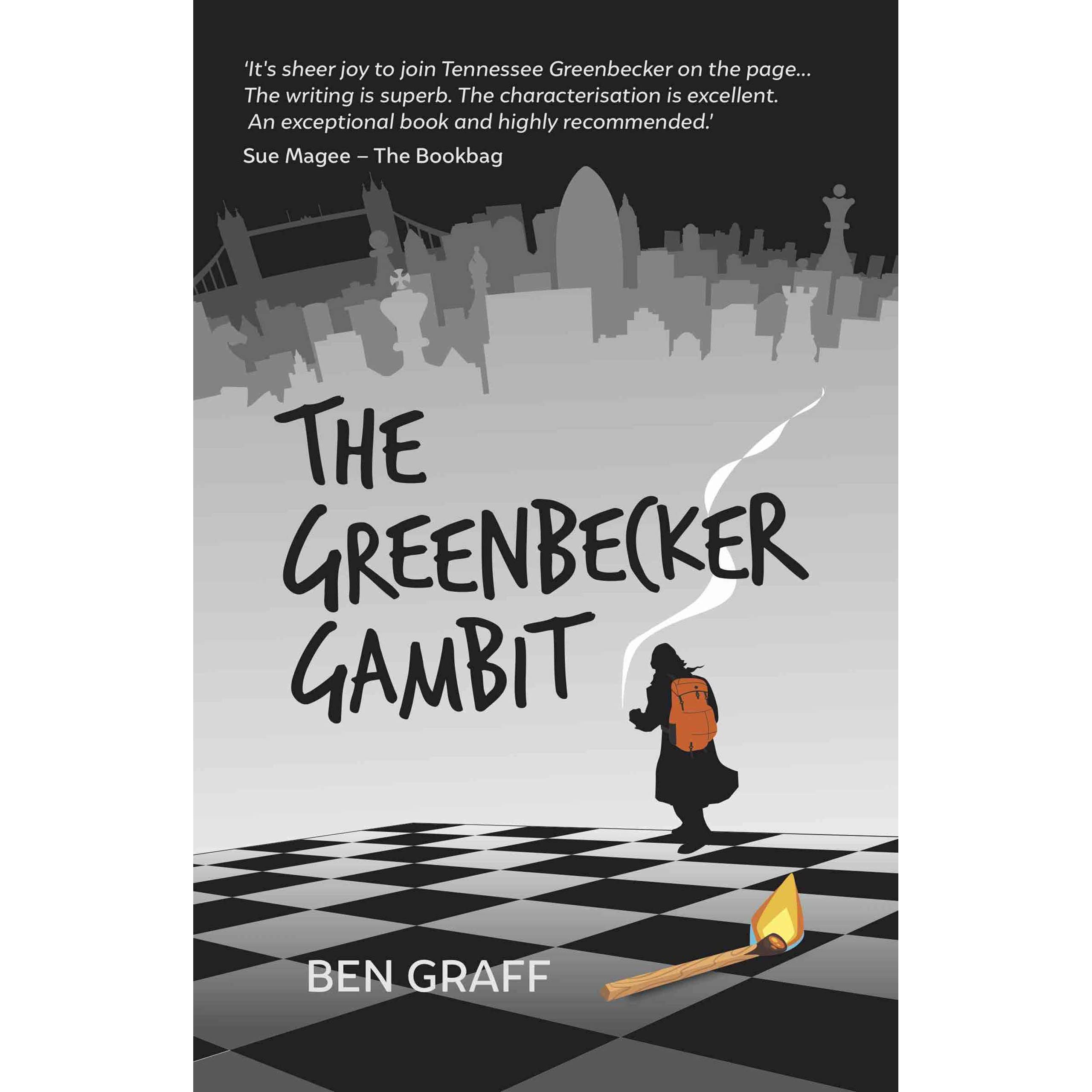
‘The Greenbecker Gambit’ – Ben Graff

This is a novel rich in content.
Everything is surely here! The author has bitten off more than he can chew but (but!) this is surely deliberate. He just loves what he does. As a reviewer I probably never have been written to by the actual author. Until now! Ben Graff dropped me a line last March sending me, quite unbidden, a copy of this well produced book. He has written stuff before, see ‘Find Another Place’ (Matador 2018). He is a journalist, Corporate Affairs professional and clearly knows his chess.
From the blurb cover:
Tennessee Greenbecker is bravely optimistic as he sets out to claim what he sees as rightfully his – the title of world chess champion. But who is he really? Is he destined to be remembered as a chess champion or fire-starter? Either way, might this finally be his moment?
If you like your novels nice and straightforward: standard stories, boy meets girl, old befriends young, the anti-hero learns a painful lesson and emerges a better, reformed, person. All well and trusted formats. I am sure you can think of other, hopefully better, examples.
Well, this is nothing like that! Arson mixes with match chess. Real players – Fischer and Kasparov for example – mix in with the fictitious. Donald Trump even appears, Brian Eley gets mentioned and who is Dubrovnik who ‘has elected not to press charges’? I’ve got you hooked haven’t I? And the narrator – that’s Greenbecker, of course (do keep up) – plays the London System.
See CHESS 04/20, pp 36-37 for extract, chapter and verse.
Having read 75% of this story I gave up, confused, though I did skip to the end.
I hope you’ll like this ambitious thriller more than I did.

James Pratt, Basingstoke, Hampshire, October 12th, 2020

BCN offers Kevin Staveley the warmest congratulations on being awarded the British Empire Medal in the 2020 Queen’s Birthday Honours List.
The citation reads : “For services to Chess in Wales”
Kevin Charles Staveley was born on December 30th 1955 in Pontypridd, Mid Glamorgan, Wales and has resided in Treorchy, Glamorgan, Wales. Currently he lives in Cwmparc, Rhondda.
He is a member of Newport Chess Club.
Kevin is Home Director for the Welsh Chess Union and many times Tournament Director of the British Chess Championships.
Kevin is ECF Manager of the British Chess Championships and is Director of the South Wales International Chess Festival, Bridgend and the South Wales Megafinal to name but a few.
He became a FIDE International Arbiter in 1991 and a FIDE International Organiser in 2013.
Kevin is editor of the Welsh Chess Union Yearbook.
Kevin is keen to encourage young players to become arbiters.

Keith Arkell is an English grandmaster active on the national and international scene for more than forty years and very much still going strong.

Arkell’s Endings is his second book and this is the first book (as opposed to DVD) from Ginger GM
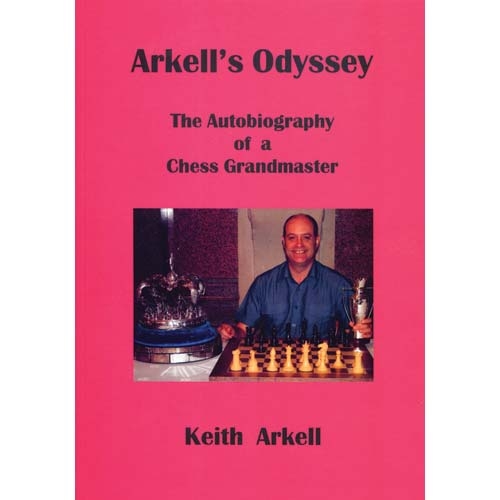
Arkell’s Odyssey was published in 2012 by Keverel Chess Books; hugely popular and in high demand on abebooks, Amazon, eBay and other reselling platforms.
From the rear cover of Endings we have the following publishers blurb :
“With chess booming online and time controls becoming ever faster, mastery of the endgame has never been so important. A few positions can be memorised; most rely on feel. How would you go about converting an extra pawn in a rook endgame and would you have any idea how to even try to win bishop and knight against knight and pawn? In Arkell’s Endings, acclaimed endgame expert Keith Arkell guides you through some of his finest games – and grinds. Making good use of clear explanation, not a wealth of variations, he should convince even the most ardent of opening theoreticians and attacking experts that endgames can be enjoyable, as well as beautiful on occasion.
Not only will readers enhance their intuition in the final stages of the game, they will never again write off an endgame as dull or a draw. Along the way, the reader will also learn plenty about the Minority Attack and Arkell’s Scale of Pawns, which may mean you will no longer look favourably on trading an e-pawn for a d-pawn. As becomes clear in Simon Williams’ Afterword, there is so much more to Keith Arkell’s chess prowess than just his endgame mastery. Throughout, his creativity and sheer resourcefulness shine through, with the Ginger GM demonstrating that one should never allow Arkell to advance his g-pawn as Black, or even to attack.
Grandmaster Keith Arkell has been one of Britain’s most prolific players since turning professional in 1980. His rivalry on the weekend circuit with fellow GM Mark Hebden is the stuff of legend, but he has also thrived on the bigger stage. He has finished first as many as 25 times at the Paignton International Congress and in 2008 tied for first in the British Championship at Liverpool’s iconic St George’s Hall. 2014 was another highly successful year, as Arkell became the European Over-50 Champion, following that up with the silver medal at the World Senior Championships.”
Keith has developed a reputation for working hard at the board and not being afraid to grind out a position maybe with a small edge or even no edge at all and just keep on plugging away (Carlsen style). His long time choice of the Smyslov Variation of the Caro-Kann as Black is deal for this approach.
White to play and loose !
To demonstrate that this is a book of note there is a foreword by acknowledged endgame analyst and World Championship Candidate, GM Jonathan Speelman whose expertise on endings and the theory of corresponding squares is respected world-wide. Interestingly enough, JS also selects the Smyslov Caro-Kann as a weapon of choice.
Arkell’s Endings contains 33 games spanning the period from 1983 to the present day against a vast range of player strength and experience.
Keith introduces his games with a preamble / Introduction that sets out his rather unique playing philosophy. Keith describes his “Hierarchy of Pawns” which makes complete sense and yet is rarely (if at all) spelt out in training and coaching literature. Keith sets out his enthusiasm for the Carlsbad (pawn) structure which I learnt much about from Kevin Wicker in his golden nugget of a book, “How to play the Queen’s Gambit Exchange Variation“. This Introduction itself is more instructional than you might at first imagine.
Keith provides each game in full and rarely makes any comment on the opening except when its choice leads to particular kind of endgame structure. The middlegame comments indicate plans and ideas to reach a superior ending and the endgame comments are quite specific.
We are grateful to IM Richard Palliser (in charge of the book’s production) for permission to reproduce game 14 as an excerpt :
and there is a downloadable excerpt here
Settling down with this book is a real pleasure. It very much feels that Keith is in the room with you explaining his thought processes and giving you confidence in your decision making. Keith’s writing style is much like Keith in person : friendly and affable and not attempting to score any points.
The book concludes with an Afterword by Ginger GM Simon Williams.
The Afterword itself is of interest since Simon presents three tremendous games of Keith that are not endgame grinds but great tactical slugfests modestly including Williams – Arkell from Torquay, 1998.
The book concludes with a welcome Index of Opponents.
If you are wondering just how many of these games conclude with Keith’s signature Rook + Bishop versus Rook then you will have to buy the book to find out : I hope you will !
This book has been reviewed elsewhere including this one by Ben Graff
John Upham, Cove, Hampshire, 10th October, 2020

Book Details :
Official web site of Ginger GM
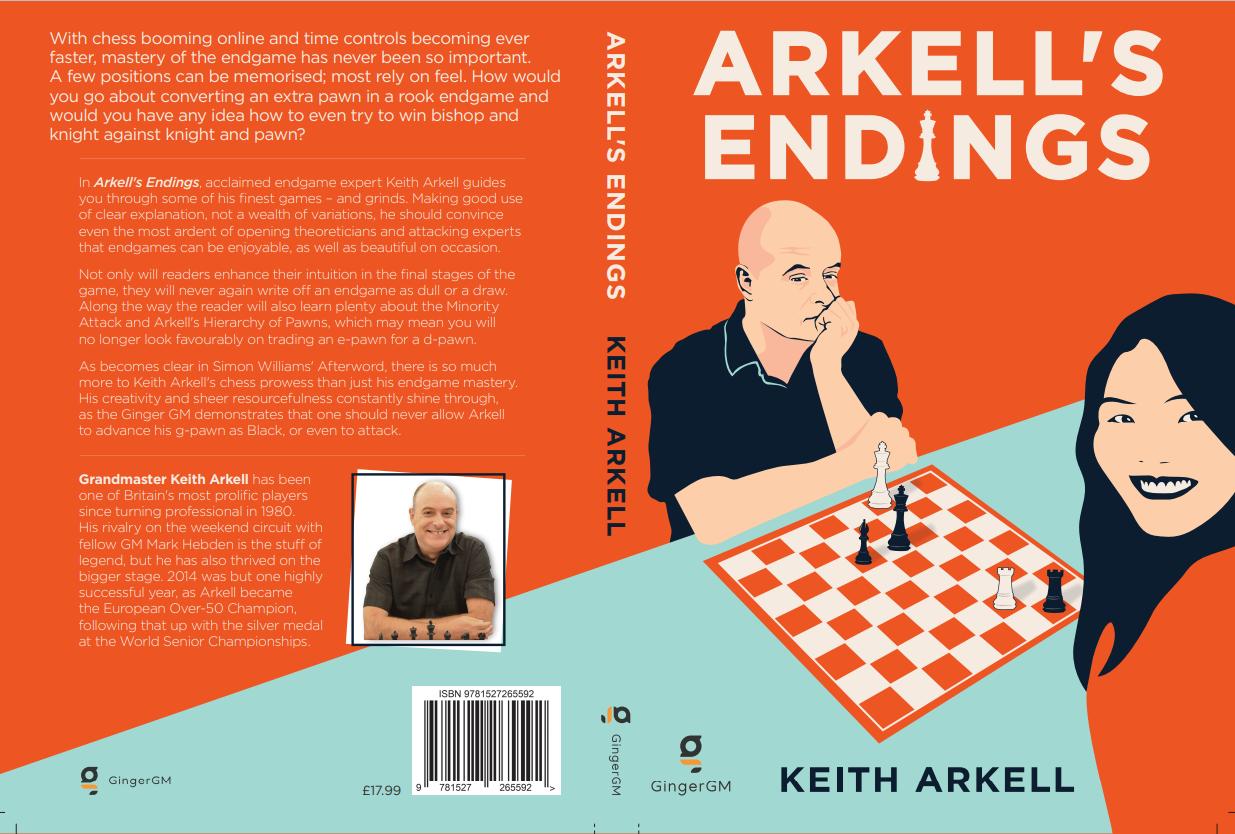
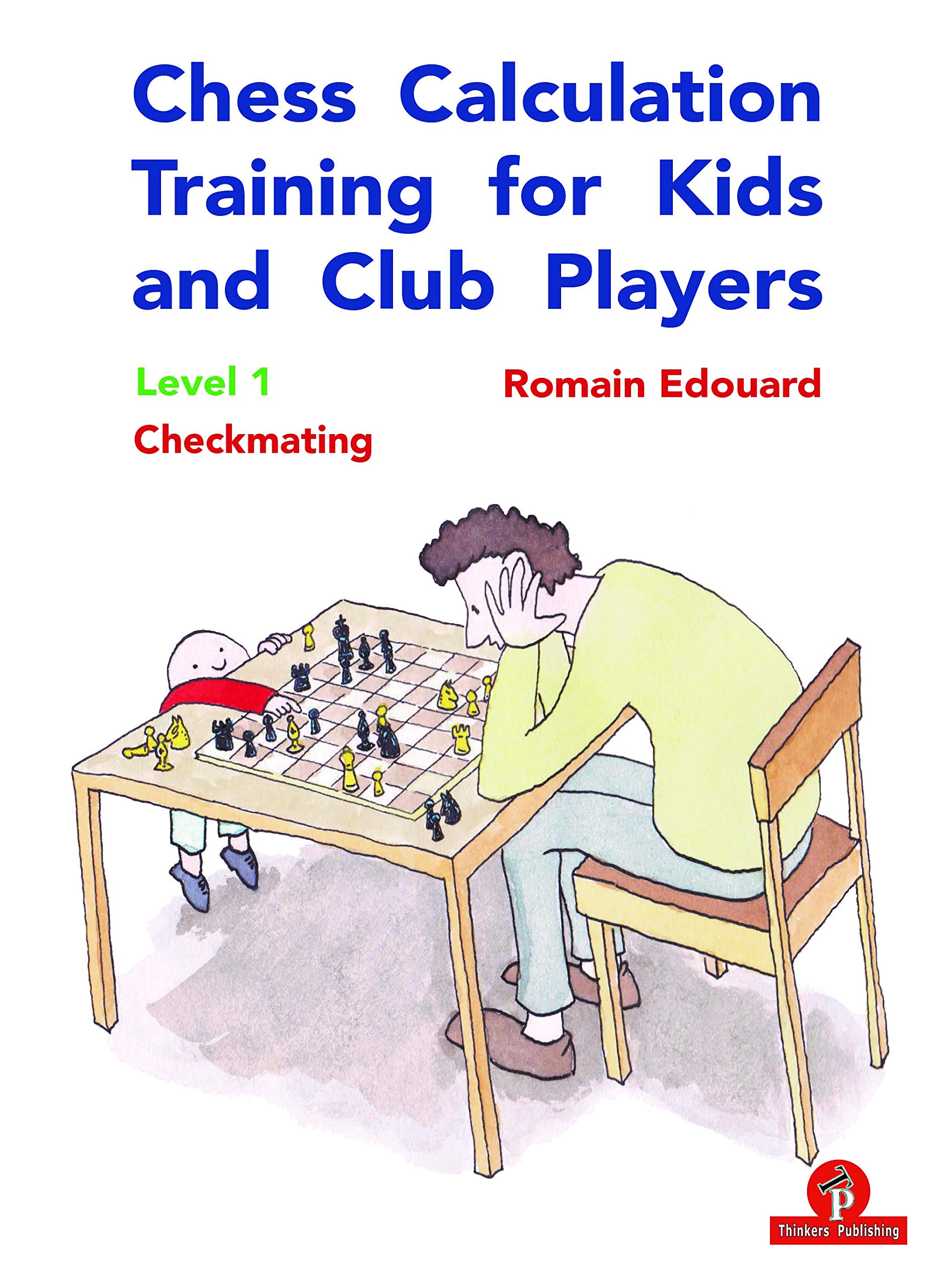
Romain Édouard (born 28 November 1990) is a French grandmaster and is Editor-in-Chief of Thinkers Publishing. Édouard has played for the French national team at the Olympiads of 2010, 2012, 2014 and 2018, won several major tournaments including equal first place in the 2015 World Open and Montreal Open 2015.
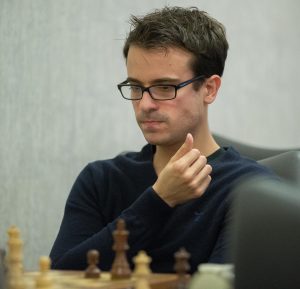
We previously reviewed Chess Calculation Training : Volume 3 : Legendary Games by the same author and were impressed (although the content was aimed at more experienced and higher rated players.)
As with every recent Thinkers Publishing publication high quality paper is used and the printing is clear. We were hoping that the excellent glossy paper of previous titles would be used but never mind.
The book can easily be laid flat next to the board and does not require weights to prevent it from “self-closing” (a particular bugbear of ours !). Each diagram is clear and the instructional text is typeset in two column format, which, we find, enables the reader to maintain their place easily. Figurine algebraic notation is used throughout and the diagrams are placed adjacent to the relevant text and each diagram has a “to move” indicator.
There is no index. However, for a tactics books this is less crucial. However, some readers might wish to list tactics from particular players…
We have reviewed several tactics books in the last few months and this one from GM Romain Edouard competes in the busy improving juniors and club players market.
There is another market sometimes not considered as important which is the adult player who does not play OTB (who does right now?) or even online but does enjoy solving chess problems : this book will satisfy these readers.
Noteworthy is the absence of patronising cartoons which can put off the more serious juniors and adults. For very young players these are fine but for probably 10 year olds plus these (IMHO) are not welcome.
The main content is divided into eight chapters :
Having scanned the index I was immediately drawn to Chapter 5 to look for unusual methods for the attacker!
However, Chapter 1 is (usually) the best place to start and consists of 48 carefully selected (i.e. a unique solution) mates in two, the first move always being a check.
Here is a nice example :
#8
Nezhmetdinov, R – Kotkov, Y
25.? +-
The solutions are grouped together at the end of each chapter avoiding the annoyance of stumbling into the solution when it appears on the same page.
You won’t need it but the solution to #8 is given as :
25. Re8+! Qxe8
25…Bxe8 26.Qg8#
26.Qxf6#
(for the history fans amongst us the above game was played at the 17th RSFSR Championship, Krasnodar, 1957.)
Chapter 2 contains 52 mates in three with all three attacker moves being check.
Chapter 3 ramps up the challenge with 40 examples of increasing number of checks to a maximum of 7. Here is a rather satisfying example from the 1987 New York Open. The attacker’s chess career was tragically cut short at the age of 22. He played this mating attack when eleven years old :
#21
Waitzkin, J – Frumkin, E
Mate in 7
26.?+-
The solution (should you need it) is at the foot of this review.
You might be thinking “if all the moves are check then the task is made easier”. Of course but this is a training book and the logical approach of Edouard provides for increasing the confidence of the student incrementally.
Chapter 4 (Trap Your Opponent’s King) serves up 32 positions in which the first move is quite often not a check but winning, nonetheless. Finding winning “quiet moves” is a skill level that is quite often beyond the less experienced or lower rated player and deserves serious study.
I particularly liked this example :
#24
Ulibin,M – Mesman,E
29.? +-
Chapter 5 (Hit the Defender) contains 40 of perhaps the most pleasing (to me at least) combinations. Each features some kind of deflection or distraction such as this rather jolly example from 1964 :
#6
Wiler – Hell
1…?-+
A hard example !
I was curious as to the source of this game and determined (with the valuable assistance of Leonard Barden) that the game was :
Following on from this Chapter 6 contains 16 examples of “A Nasty Double Threat” in which the attacker makes a move that threatens a simultaneous forced mate and the win of material.
Difficult to chose but #5 appealed in a satisfying way :
#5
Jansen,I = Asenova,V
19…?-+
The penultimate chapter promises 32 tales of the unexpected with “An Unexpected Blow” : nothing to do with The Italian Job.
Essentially, this group of positions feature some kind of sacrifice that explodes the defender’s position. Some great examples and this one is from Wijk aan Zee, 1991 that GM Ben Finegold would surely enjoy !
13
Khalifman, A – Seirawan, Y
22.?+-
Finally, Chapter 8 (A Few More Problems) contains 16 positions that could not be categorised in the previous 7 chapters.
I’ve selected the final one for your entertainment :
16
Abasov, N – Kantor, G
30.?+-
Find the killer move for White!
I hope you enjoyed those!
So, in summary we have 48+52+40+32+40+16+32+16=276 positions including both classics and contemporary with a whole range of themes suitable for improving and advanced juniors and club players. The presentation is excellent and the solutions clear. I found one typographical error (hxg4 instead of fxg4) and one position incorrectly attributed.
As a coach I am looking to unleashing these on my students. I’ve recommended this book to their parents without hesitation and am looking forward to Level 2 and beyond.
Chess parents take note !
John Upham, Cove, Hampshire, 8th October, 2020

Book Details :
Official web site of Thinkers Publishing

n.b. Solution to Chapter 3, position #21 :
26.Qxg7+! Kxg7 27. Bf6+ Kg6
27…Kh6 28.Rh3+ Kg6 delays mate by one move
28. Rg3+ Kh6
28…Kh5 29.Rg5+ Kh4 30.Nf3#
29.Bg7+ Kh5 30.Rg5+ Kh4 31.Nf3#
Old Wine In New Bottles : Mihail Marin
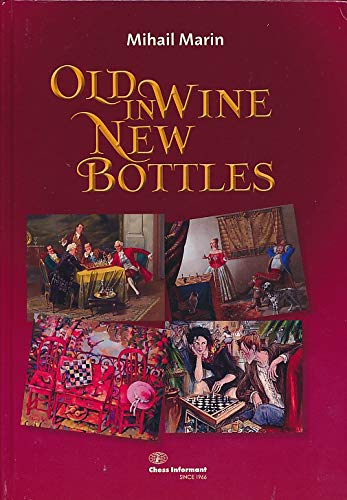
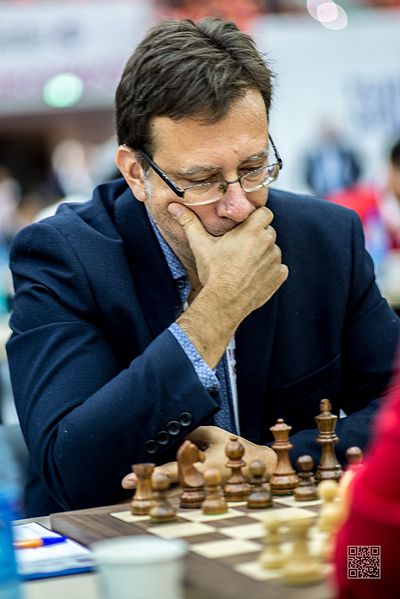
From Wikipedia :
“Mihail Marin (born 21 April 1965) is a Romanian chess player and writer. He was awarded the title of Grandmaster by FIDE. Marin’s first major success in international chess was in qualifying for the Interzonal in 1987. He has won three Romanian Championships and has played in the Chess Olympiads ten times, winning a bronze individual medal in 1988. For several years he was editor of the magazine Chess Extrapress.”
From the book’s rear cover :
“I may be old-fashioned, but I keep using for my inspiration the treasure of the past. It does not make sense to speculate whether, for instance, Carlsen is stronger than Fischer or Korchnoi, as matches between players separated in time by so many decades are impossible. But this book aims to prove that some of the basic aspects of our game did not change over the generations. The same kind of brilliant ideas and mistakes are played again and again in specific situations.
I actually launch an invitation to examine the games of the classics, featuring ideas thought over only by human brains, and by no means less deep than those used today. We all use computer assistance when preparing or writing, but at the chess board we are all alone with our opponent, so educating our mind to work along the classical values is essential.It is virtually impossible to write a “complete” chess course, as the general themes and examples to each of them are practically inexhaustible. But I hope that after studying the book the reader will feel enriched, technically and aesthetically.
I remember my enthusiasm when receiving my first original copy of the Chess informant in 1987 (number 43) after having annotated some of my games from the Warsaw zonal tournament, ending in my first qualification to the Interzonal. Almost a third of a century has passed since then, but I am looking forward to hold this new book in my hands with no less excitement.”
You probably know how it is when your favourite singer releases a Greatest Hits compilation. As a big fan you have them all already, but there are always a couple of new songs, so, not wanting to miss out, you have to pay for the full album.
It’s been many years since I last read an Informant, but for some time now GM Mihail Marin, one of the best annotators around, has been publishing articles under the title Old Wine in New Bottles, in which he takes a recent game and compares it with games from the past which resemble it in some way. This might be, for example, a similar opening, a similar tactical idea, the same pawn formation, a comparable ending. Sometimes the comparison is very precise, but, on other occasions, rather tenuous.
What we have here is a collection of his articles, with some new ones added to tempt regular readers who will have seen most of the material before, along with some introductory comments.
There are 25 articles, or rather chapters, in total, grouped according to the general theme: Basic Principles, Tactics, Strategy, The Attack, Middlegame Plans of Specific Openings, and, finally, The Individual and Joined Abilities of the Pieces (some, but not all of which, feature endings).
You might assume from this, and you’d be correct, that the translation into English isn’t always idiomatic. There’s also an unacceptably large number of typos.
The publishers have also made some rather strange production decisions. They’ve chosen a non-standard diagram font with a defective symbol for a black rook on a white square, which makes a rather ugly impression. They’ve also chosen to use a sans-serif font throughout.
This is a handsome hardback, complete with a useful bookmark, which will look good on your bookshelf: it’s a pity that, internally, it doesn’t make such a good impression.
The text is punctuated by a lot of chess art, reproduced in black and white, from the Hereford Chess Club in 1814 up to the present day. All very attractive, if not especially relevant, but I can’t find any copyright information anywhere.
None of this may bother you, as long as the content is good, and, with reservations, it is.
To give you some idea, let’s take a fairly random chapter. Chapter 4 in the section on Attack deals with sacrificial attacks beginning with the move e5xf6, taking as its starting point this game from the 2017 Sinquefield Cup, where you will observe Vishy’s 22nd move. Marin doesn’t give us the first 21 moves, which presumably appeared elsewhere.
This game brought to mind a brilliant Tal victory from the 1962 Olympiad, where the sacrificial attack started on move 19.
Tal admitted that his 19th move was inspired by a Famous Game which observant readers will have seen before.
It’s, of course, a very well known game, but observant readers will recall encountering it with different annotations in an earlier chapter on positional queen sacrifices to obtain a passed pawn. Here, the annotations are in part based on Lilienthal’s autobiography, which are, along with Hecht’s comments on his loss to Tal, readily found on MegaBase. (It’s always fun to try to identify an author’s sources!)
There are three more games in this chapter, including another Tal brilliancy, but the repetition of the Lilienthal game confirms the impression that it’s really a collection of articles rather than a particularly coherent book.
Not all the annotations are by Marin himself: in many cases they are largely taken from earlier Informants, with occasional authorial interjections. You might not mind this, but I guess you might also feel you’ve been cheated.
Nevertheless, the concept of comparing contemporary games with those from the past is a great idea. If the idea attracts you, or if you’re an admirer of Marin’s books and haven’t seen most of the articles before, you’ll find a lot to interest, inform and stimulate. As the book covers all aspects of the game, there are lessons to be learnt here about both tactics and strategy, about openings and endings.
Although I have significant reservations about various aspects of the book, there is still much of value here, and anything Marin writes is always worth reading. Recommended, especially for serious students of the game of, say, 1800+ strength.
Richard James, Twickenham 7th October 2020

Book Details :
Official web site of Sahovski Chess
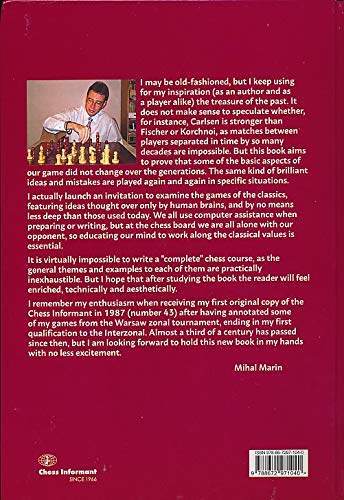
The Complete Chess Swindler : David Smerdon
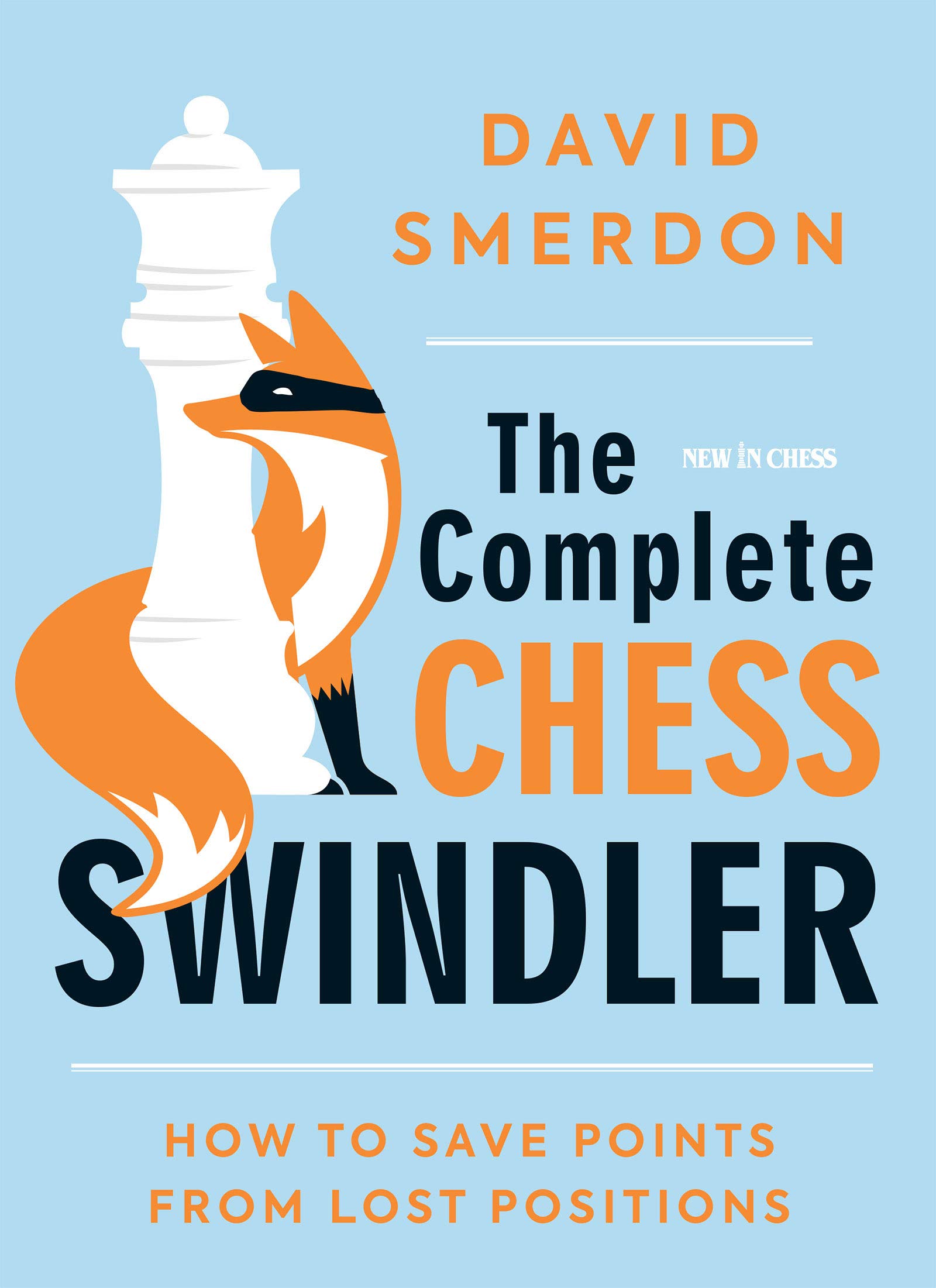
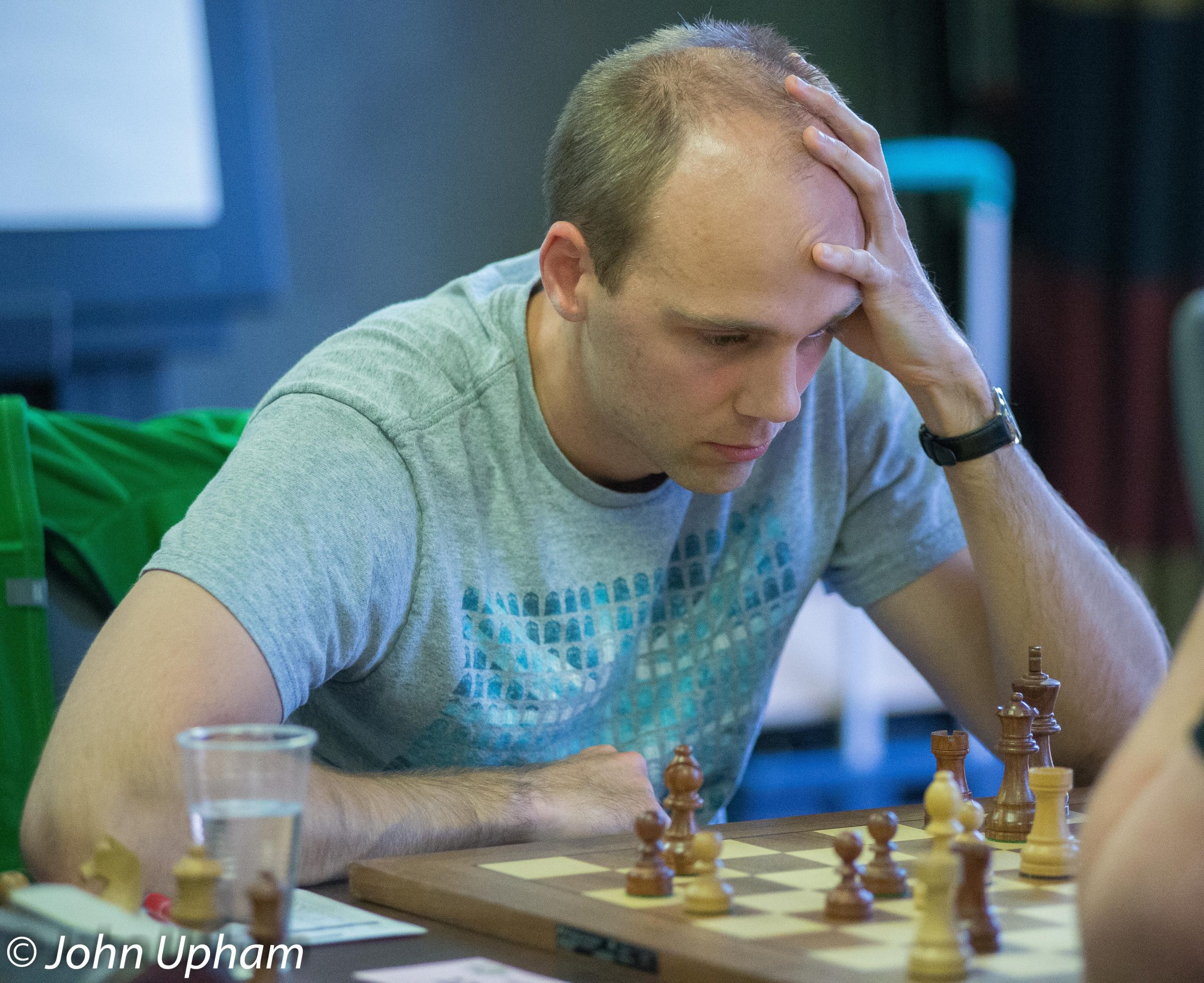
David Smerdon is an Australian chess grandmaster and behavioural economist. In 2015 he published the highly successful chess opening book Smerdon’s Scandinavian.
From the book’s rear cover :
“Chess is a cruel game. We all know that feeling when your position has gone awry and everything seems hopeless. You feel like resigning. But don’t give up! This is precisely the moment to switch to swindle mode. Master the art of provoking errors and you will be able to turn the tables and escape with a draw or sometimes even steal the full point!
Swindling is a skill that can be trained. In this book, David Smerdon shows how you can use tricks from psychology to marshal hidden resources and exploit your opponent’s biases. In a lost position, your best practical chance often lies not in what the computer recommends, but in playing your opponent.
With an abundance of eye-popping examples and training exercises, Smerdon identifies the four best friends of every chess swindler: your opponent’s impatience, their hubris, their fear, and their need to stay in control. Youll also learn about such cunning swindling motifs as the Trojan Horse, the decoy trap, the berserk attack, and ‘window-ledging’.
So, come and join the Swindlers’ Club, become a great escape artist and dramatically improve your results. In this instructive and wildly entertaining guide, Smerdon shows you how.”
As with every recent New in Chess publication high quality paper is used and the printing is clear. The book can easily be laid flat next to the board and does not require weights to prevent it from “self-closing” (a particular bugbear of ours !). Each diagram is clear and the instructional text is (mostly !) typeset in two column format, which, we find, enables the reader to maintain their place easily. Figurine algebraic notation is used throughout and the diagrams are placed adjacent to the relevant text.
Who doesn’t love a good swindle? Well, if you’ve just been swindled in the final of your online club championship I guess you might not, but, in truth, as long as we’re not the victim we all love a good swindle.
So it’s surprising, then, that it’s a subject which hasn’t been covered much in chess books. Australian GM David Smerdon’s new book promises to fill that gap in your library.
Here’s Smerdon’s description of a swindle:
1) The Swindler starts from an objectively lost position.
2) The Swindler consciously provokes the victim into blundering, usually by taking advantage of some psychological trait.
3) The victim squanders the advantage, allowing the swindler to escape with a draw or even the full point.
He also offers three questions to help you find swindles.
1) What does my opponent want?
2) How is he planning to do it?
3) What’s good about my position?
Let’s look at an example.
This is Shirov-Kramnik (Groningen 1993). White launched a manic attack right from the opening, but Black defended calmly.
Now Shirov had to make a choice. He saw 18. Qh4 Nxg3 19. Bxe7 Nxf1 20. Bxd8 Qxe5 21. Bf1 Qe3+ 22. Kb1 Bc6 which he assessed as favourable to Black due to White’s uncoordinated forces.
Instead he went for the spectacular 18. Bxh6!?! when the game concluded 18… Nxf4 19. Bxg7+ Kh7 20. Rxf4 Rg8 21. Rfg4 Rxg7 22. Rxg7+ Kh6 23. Rg8 Kh7 24. R8g7+ with a draw.
However, as Smerdon points out, Kramnik could have won with the beautiful counter queen sacrifice 21… Qxc3!!, when 22, Rxc3 Rxg7 leaves Black a piece up, while 22. bxc3 Ba3+ is a pretty standard mate. (Smerdon’s ‘exquisite’ seems a bit hyperbolic to me.)
Smerdon might have mentioned that 20… Qxc3!! would also have worked, and that Black could equally well have played 19… Kg8 20. Rxf4 Qxc3!!.
All very interesting, but was it really a swindle?
It depends. Did Shirov see Qxc3 at move 18. at move 21, or not until after the game? If he’d decided 18. Qh4 would lose, had seen the Qxc3 defence and played Bxh6 anyway, hoping Kramnik would miss it, then, yes, it was a swindle. But if he’d seen the game conclusion in advance and played it, thinking he was forcing a draw, then it was something arguably more interesting: a mutual blunder by two of the strongest players in the world.
Why, then, did Kramnik, a future world champion rated 2710 at the time of the game, miss, on two occasions, what was essentially a fairly simple two move tactic. A psychological flaw? A cognitive bias? Perhaps he was only looking at the king side, where all the action was, so missed a tactic on the other side of the board. You could say that looking at the wrong side of the board is a cognitive bias of sorts, but it’s not what Smerdon has in mind.
There are all sorts of reasons why we make the type of mistake we really shouldn’t make. Cognitive bias, yes, but also, for example, time trouble or fatigue. It’s always interesting to hear a great player explain how he made a simple oversight. Take this example.
This is Petrosian-Kortchnoi (1963) with Black to make his 32nd move. White has an overwhelming advantage in this rook ending, but he’s facing a resourceful defender.
Smerdon quotes Petrosian. “For a long time I had regarded my position as a winning one. Thus the whole opening phase of the struggle, when Kortchnoi was unable to get out of trouble, had psychologically attuned me to the idea that the ending would be favourable to me.”
Kortchnoi tried 32… Rf8 (sheer bluff: 33. Rxh6 or Re6 both win easily) 33. d6 Rh8 34. Kg4 Rf8 when the world champion fell straight into the cunning trap: 35. Rxh6?? f3!!.
Petrosian again. “I did not even see the threat f4-f3, possibly because it was in contrast to Black’s hopeless position. Personally, I am of the view that if a strong master does not see such a threat at one he will not notice it, even if he analyses the position for twenty or thirty minutes.”
This, then, unlike the Shirov-Kramnik position, is an excellent example of where Smerdon’s theory works. Petrosian was swindled because he was overconfident, convinced that nothing could possibly go wrong.
Smerdon identifies two pairs of psychological flaws which, in his view, are usually the cause of a player being swindled. Two, impatience and hubris, are caused by overconfidence, while two more, fear and kontrollzwang (the need to keep the position under control) are caused by lack of confidence.
He goes on to suggest that, if you know your opponent is impatient, you should look for a Trojan Horse: a move which seemingly offers your opponent a quicker or easier way to win, but instead sets a trap. If he’s overconfident, consider a Decoy Trap: a move which creates two threats: with any luck he’ll meet the minor threat while missing the major threat.
On the other hand, if your opponent is looking fearful, play a Berserk Attack, which will make him even more scared than he is already. If he’s a player who likes to keep control, adopt a window-ledging strategy: randomise the position so that neither player really knows what’s happening.
This is all very interesting, and great fun as well. Along the way, we meet characters such as Aussie swindling expert Junta Ikeda, and ever-optimistic German FM Olaf Steffens: in one game here we witness him window-ledging Richmond IM Gavin Wall.
But, I wonder how often you have a choice of swindles to set. In the real world, once we’re in swindling mode we’re just trying to find moves to stay in the game and pose problems for our opponent. We’re not really going to stop and take our opponent’s mindset into consideration before deciding which swindle to set up.
Understanding your cognitive biases is important, and, I’d suggest, this is rather more useful in helping to avoid being swindled yourself than in swindling your opponent. But is it really true that swindles usually exploit psychological flaws? I’m not entirely convinced.
By now we’ve reached Part IV, where the mood changes. We now look at the Core Skills swindlers need. The corollary is, of course, that if you want to avoid being swindled you also require these skills.
You can try to swindle your opponent by heading for an ending which might be difficult or impossible to win despite a large material advantage. For instance, KQ v KR is, generally speaking, a win, but notoriously difficult in practice. Knowing the defensive techniques to give your opponent the most trouble is helpful, as is knowing how to win against best defence. KRB v KR, on the other hand, is, generally speaking, a draw, but not so easy over the board (especially if you’re playing Keith Arkell). Knowing the correct technique is again useful – for both sides.
The next two chapters cover Fortresses and Stalemate, both familiar in the rarefied world of endgame studies but not often discussed in relation to competitive chess. We then continue with Perpetual Check, a very frequent guest in Swindleland.
We also look at Creativity. Here, for example, is the conclusion of the remarkable game between Detlev Birnbaum (2190) and Eloi Relange (2420) played at Cappelle-la-Grande in 1995. You’ll have to buy the book to find out what was really happening here.
Part V demonstrates some complete games from both master and amateur chess, including Smerdon’s favourite swindle. Finally, Part VI presents 110 quiz questions, in which you have to find, or avoid, a swindle.
This is a unique book which covers a number of important topics not usually mentioned in text books, and does so in highly entertaining fashion. Smerdon’s writing style is lively, if sometimes loose, and he presents a lot of fascinating material. You’ll find a lot of creative and resourceful ideas here which should inspire all readers to look for ways to convert their potential losses into draws, or even wins. I would guess that, in terms of chess improvement, players in the 1800-2200 range would benefit most, but I really can’t imagine any reader not falling in love with this book. There is a lot of helpful advice – most importantly perhaps, not to give up in a lost position but to look for ways to provoke your opponent into making a mistake. Not only will it help you to find swindles in your own games: it will also help you to avoid being swindled yourself.
I do have a couple of reservations: as mentioned earlier I think Smerdon overstates the importance of cognitive bias in swindles when there are many other factors involved. What looks like a swindle might, on occasion, just be a mutual blunder: to be certain we need to know the swindler’s motive. As a behavioural economist by profession, he is naturally interested in why and how decisions are made, and this is something not very often mentioned in chess literature. Cognitive bias and psychological flaws undoubtedly affect how we study chess as well as our performance at all stages of the game. Given his academic background, Smerdon would, I think, be the ideal author for a book of this nature.
I would also have preferred a broader historical perspective, but then Smerdon, unlike some other authors, is sceptical about the value of studying the classics. Mention might also have been made of endgame studies, which frequently use many of the ideas discussed in this book: you might, at one level, see all endgame studies as the result of a swindle, and I suspect that solving studies, as recommended by a number of esteemed chess coaches, might be very beneficial in helping you to find, or avoid, swindles.
In spite of these reservations, I have no hesitation in recommending The Complete Chess Swindler to all readers. There have been some exceptionally interesting chess books published this year, and this is certainly one to add to the list.
Richard James, Twickenham 23rd September 2020

Book Details :
Official web site of New in Chess
